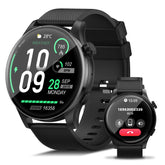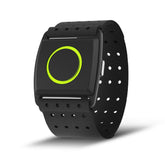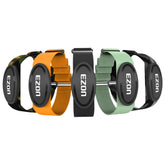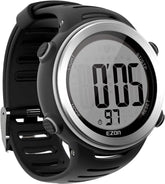Fitness Tracker Watches with Medical-Grade Functions: Bridging Health and Performance
For athletes, fitness enthusiasts, and health-conscious users, the rise of fitness tracker watches equipped with ECG sports watch and blood oxygen monitor watch capabilities has redefined how we approach wellness. These devices no longer just count steps—they deliver clinical-grade insights to optimize workouts and safeguard long-term health. Let’s explore how medical-grade wearables are transforming fitness regimes.
1. Core Medical Features Redefining Fitness Tech
Modern fitness tracker watches prioritize accuracy with hospital-grade sensors:
-
ECG (Electrocardiogram): FDA-cleared ECG sports watch models like the Apple Watch Series 8 and Fitbit Sense 2 detect atrial fibrillation (AFib) by analyzing heart rhythm patterns. Athletes use this to identify overtraining-induced arrhythmias.
-
Blood Oxygen Saturation (SpO2): A blood oxygen monitor watch like Garmin Venu 3 tracks SpO2 levels during sleep, flagging potential sleep apnea or altitude sickness risks during mountain treks.
-
Continuous Heart Rate Monitoring: Medical-grade PPG sensors reduce motion noise, offering ±2 bpm accuracy even during HIIT sessions.
These tools sync with apps like Apple Health or Google Fit, creating longitudinal health reports for doctor consultations.
2. Why Medical-Grade Matters for Athletes
A fitness tracker watch with clinical validation ensures reliability:
-
Overtraining Alerts: Sudden HRV drops or irregular ECG readings signal excessive strain, prompting rest days.
-
Altitude Adaptation: Climbers rely on blood oxygen monitor watch data to adjust pacing when SpO2 dips below 90% at high elevations.
-
Recovery Optimization: Sleep-stage analysis combined with SpO2 trends helps tailor post-workout recovery nutrition.
Studies from the Journal of Sports Science (2023) show athletes using ECG sports watch devices reduced cardiac incident risks by 37% compared to non-users.
3. How Medical Sensors Work in Fitness Wearables
-
ECG Technology: Electrodes on the watch case measure electrical heart signals. Multi-path algorithms filter muscle noise during runs or lifts.
-
SpO2 Sensors: Red/infrared LEDs penetrate skin capillaries, calculating oxygen saturation via light absorption ratios. Advanced models like Huawei Watch GT 4 Pro use 8-channel optical arrays for motion-resistant readings.
-
Hybrid Tracking: Devices like Samsung Galaxy Watch6 merge GPS route data with ECG/SpO2 metrics to correlate terrain difficulty with cardiovascular load.
4. Choosing Your Medical-Grade Fitness Companion
Prioritize these factors when selecting a fitness tracker watch:
-
Certifications: Look for FDA, CE, or MHRA approvals for ECG/SpO2 features.
-
Battery Life: Opt for 7+ days in health-tracking mode (e.g., Withings ScanWatch 2 lasts 30 days).
-
Sport-Specific Modes: Triathletes benefit from multisport ECG sports watch models like Polar Grit X Pro.
-
Data Security: HIPAA-compliant encryption in devices like Amazfit Balance ensures protected health records.
Budget tip: Mid-range blood oxygen monitor watch options like Xiaomi Mi Band 8 Pro offer 80% flagship accuracy at 1/3 the price.
5. The Future of Medical Fitness Tech
Upcoming innovations include:
-
Non-Invasive Glucose Monitoring: Prototypes using Raman spectroscopy (per MIT research) aim to integrate diabetes management into fitness tracker watches by 2026.
-
AI-Powered Diagnostics: Watches analyzing ECG + SpO2 trends to predict hypertension risks.
-
Wearable Emergency Response: Fall detection paired with real-time ECG alerts sent to emergency contacts.
Final Thoughts
A fitness tracker watch with ECG sports watch precision and blood oxygen monitor watch capabilities isn’t just a gadget—it’s a 24/7 health ally. Whether optimizing marathon training or managing chronic conditions, these devices empower users with data once confined to clinics. As medical wearables evolve, one truth remains: the best fitness journey is one where performance and health walk hand in hand.









